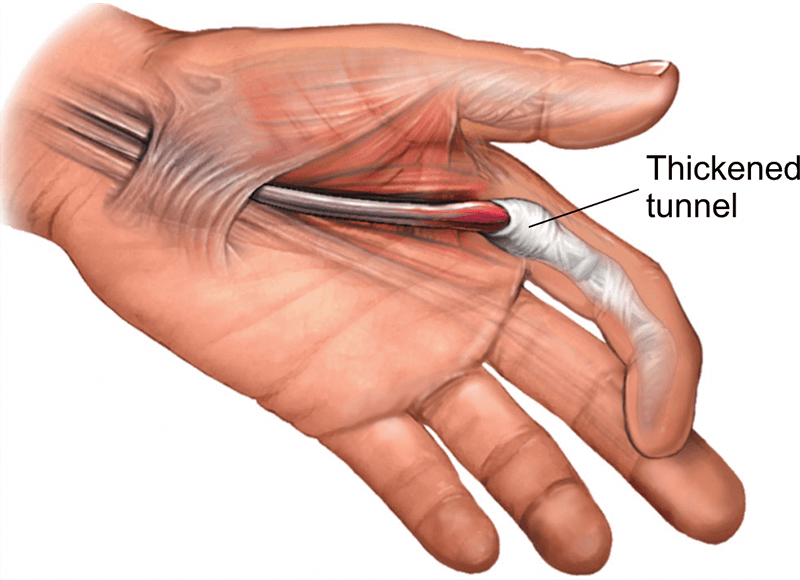trigger-finger-release

Trigger finger is a condition in which one of your fingers gets stuck in a bent position. Your finger may bend or straighten with a snap — like a trigger being pulled and released. Trigger finger is also known as stenosing tenosynovitis (such-NO-sing ten-o-sin-o-VIE-tis). It occurs when inflammation narrows the space within the sheath that surrounds the tendon in the affected finger. If a trigger finger is severe, your finger may become locked in a bent position.
People whose work or hobbies require repetitive gripping actions are at higher risk of developing a trigger finger. The condition is also more common in women and in anyone with diabetes. Treatment of trigger finger varies depending on the severity.
Symptoms
Signs and symptoms of trigger finger may progress from mild to severe and include:
✔ Finger stiffness, particularly in the morning
✔ A popping or clicking sensation as you move your finger
✔ Tenderness or a bump (nodule) in the palm at the base of the affected finger
✔ Finger catching or locking in a bent position, which suddenly pops straight
✔ Finger locked in a bent position, which you are unable to straighten
Causes:
Tendons are fibrous cords that attach muscle to bone. Each tendon is surrounded by a protective sheath. Trigger finger occurs when the affected finger’s tendon sheath becomes irritated and inflamed. This interferes with the normal gliding motion of the tendon through the sheath. Prolonged irritation of the tendon sheath can produce scarring, thickening and the formation of bumps (nodules) in the tendon that impede the tendon’s motion, even more.
Treatment:
Surgery for trigger finger is done to increase the space for your flexor tendon to move. Your flexor tendon is a tendon in your fingers that is activated by your muscles to pull on the finger bones. That allows your finger to bend and flex. After surgery, the finger can bend and straighten without pain.
